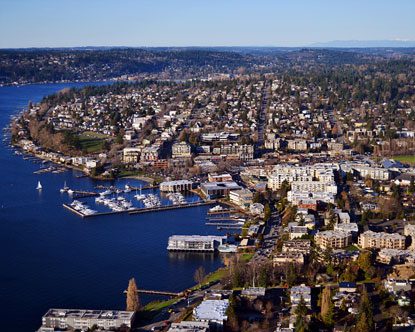“On the ClearPath” interview series is an opportunity to highlight stories and experiences from ICLEI members as well as ClearPath users in an effort to bring greater awareness to ICLEI members and the power of ClearPath. With hundreds of local governments actively leveraging the platform to monitor and track their municipal and community scale emissions, ClearPath is becoming the premiere local government emissions management platform.
We continue our blog series with Kirkland, WA which is a growing community of about 86,000 in King County outside of Seattle, WA. We sat down “virtually” with Van Sheth, Management Analyst with 15 years experience at the City to learn more about the City’s climate and sustainability goals through Kirkland Green as well as her experience with ClearPath.

What action plans have you set in place for your community?
In 2009, Kirkland followed ICLEI’s 5 milestones for climate mitigation framework and City Council adopted resolution Climate Protection Action Plan for government operations and community scale. Both have consistent goals of reducing emissions below baseline of 10% by 2012, 20% by 2020 and 80% by 2050.
Since then, tracking our government operations data is more straightforward and easier. We have produced an annual progress report on government operations since 2010
Is your community reaching your inventory goals?
At the municipal level, we are reaching our emissions goals through our Green Power Purchasing program where all buildings and facilities and pump and lift stations purchase 100% clean power. With our analysis and monitoring, we understand the importance of building sustainability and our new Kirkland Justice Center is pending LEED Silver and purchases 35% green power.
What are your challenges or barriers with emissions data at the government operations and community scale?
At the Government scale, our challenges are based on the expansion of city services and buildings due the annexation in 2011. We have had to adjust our baseline as well as targets and are looking to update those moving forward.
The Community inventory tracking is more complicated. Initially, Puget Sound Clean Air Agency worked with King County to develop inventory at the regional scale which apportioned an amount of VMT, household and economic activity to create the 2005 Kirkland Community GHG inventory as a portion of the county. The goal was to provide an update for every three years for community and next time would have been 2012 for community progress report, but in 2011, Kirkland annexed a large territory, almost doubled the city’s population and baseline inventory no longer applied. Since 2012, Kirkland is trying to come up with new community scale inventory, in 2012, KIng County Climate Collaborative (K4C) was created as a regional alignment with climate goals. Kirkland signed on to pledge to the regional commitments (12 in total) and contracted Climate Solutions to create an emissions map.
We are receiving more and more questions from the community and our goal is to help provide transparent data and results based on our climate work.
How is the City using emissions data to drive decisions?
Energy and emissions data helped us see the benefit of creating a LEED silver Justice Center as opposed to building as usual. We also want to lead by example through purchasing green power for our municipal facilities so that can be a catalyst for the community to also purchase green power to reduce their environmental impact and help create clean energy jobs.
How has ICLEI’s ClearPath tool helped your community reach its emissions goals?
We just started using ClearPath this year and it has mostly been a data entry tool but we look forward to using ClearPath as the complete platform to forecast, plan and monitor our energy and emissions data. We hope to be able to assess what type of reduction measure can we expect.
What story is the community trying to tell with the data generated in ClearPath?
Kirkland is using ClearPath as a way to describe what % of emissions are coming from certain sectors and then highlight what measures have helped to reduce emissions.
What did you like most about using ClearPath?
It is much easier to compare year to year and see every inventory over time. With CACP, we were stuck with limited reporting and a difficult desktop application. ClearPath provides us with more robust reporting and easier access with the online platform. I feel more empowered and although I had a lot of data to migrate especially for buildings and vehicle fleet, it wasn’t as challenging as I thought and it was great to able to adjust the emission factors.
Do you have any advice to others starting on ClearPath?
ClearPath is what you make of it and the online training modules were very helpful. I’d recommend that any user review them before you start so the tool doesn’t feel that daunting. I found that you don’t have to spend too much time to get basic inventory information and utility data is easy to enter and can help inform building performance. ICLEI technical support through webinars was critical and I would not have been able to accomplish what I did in ClearPath (migrating 7 years worth of LGO emissions data from CACP) if it wasn’t for ICLEI staff support.
What is your favorite climate mitigation or adaptation program of your community?
Our green building permitting for single family residential construction is getting stronger and we are issuing more permits. We also launched a Solarize Kirkland Program in 2015